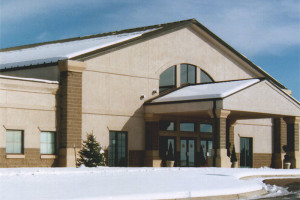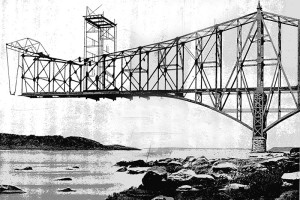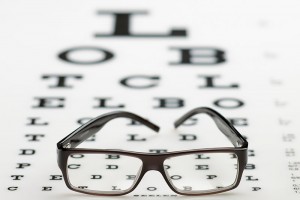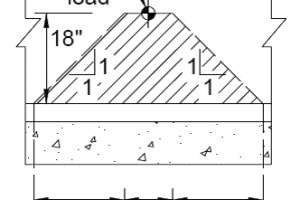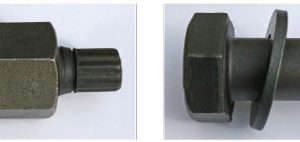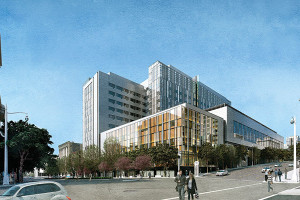Throughout a significant portion of the United States, the design snow load on roofs typically exceeds the roof design live load, so many structural engineers need to be familiar with snow load determination. The level of complexity in calculating the design snow loads for a building or other structure can vary from simple to complex, depending on the building location, the roof geometry, and the roof finish. The design snow load calculations for a flat roof with no parapets on a big-box store located in Iowa is relatively simple. …
Review Category : Articles
The first in a three part series on the Quebec Bridge.
In the middle of the 19th Century, the St. Lawrence River had not been bridged. In early 1852, the City Council of Quebec City requested Edward W. Serrell to make a study of the problem and make recommendations for a bridge. His major bridge at this time was the suspension bridge he built across the Niagara River connecting Lewiston and Queenstown. …
I had a conversation with a colleague recently while developing a fee proposal for a seismic project which was to use a national structural engineering seismic standard. Our discussion eventually got around to that often repeated question, “why are these provisions so constraining, rigid and detailed, leaving me no flexibility to make engineering judgments?” My colleague told me that the answer was that the writers of codes and standards are trying to force engineers to do the “right thing” in all situations, via the technical provisions. …
At the 2013 annual meeting of the National Academy of Engineering in Washington, DC, Mitch Daniels, the former governor of Indiana and the president of Purdue University, said this about the possibility of educating too many engineers: “But even if we were to somehow outrun the market’s need for engineering talent, we will be a far stronger country if the engineering mentality takes a more prominent place in our national conversation.” …
The concept of resiliency has been a topic of interest in a lot of emails I have received lately. There are two definitions on Dictionary.com for resilience (or resiliency).
1) The power or ability to return to the original form, position, etc., after being bent, compressed, or stretched; elasticity.
2) Ability to recover readily from illness, depression, adversity, or the like; buoyancy. …
In October 2005, I received a call from Ron Hamburger, who was nearing the end of his term as President of NCSEA. He informed me that Jim DeStefano had resigned as chair of the Editorial Board for STRUCTURE magazine, and he asked me if I would be interested in succeeding him. He described the job as primarily coordinating the work of the other members, which consisted of soliciting, shepherding, and editing articles for publication. …
ASCE 7-10 Requirements
The perimeter of parking garages, and the edges of split ramps in the interior of parking garages, are required to have barriers, restraints or guardrails to stop the vehicles inside the structure from plunging down. The design and detailing of the perimeter walls has been a concern to public safety. The author has published three articles in STRUCTURE magazine on the subject calling for a rational design method for vehicular barrier systems. …
Several significant changes have or will soon occur in high-strength bolting for steel buildings. These changes have been incorporated into the latest drafts of the upcoming AISC Specification for Structural Steel Buildings (AISC 360-16), and related AISC standards such as AISC 341 and AISC 358. The Research Council on Structural Connections (RCSC) is beginning work on a new version of the Specification for Structural Joints using High-Strength Bolts to address these changes. AASHTO bridge design and construction specifications are also in the process of addressing these changes. …
Los Angeles is no stranger to earthquakes and, like other cities in California, has experienced extensive damage in previous seismic events, which has led to significant advancements in earthquake engineering. Some might say that L.A. has been the epicenter of seismic code development since the 1933 Long Beach Earthquake. Because of its long history with seismic events and their aftermath, Los Angeles has embarked in a leadership role to create a long-term program to educate the public, help building owners to seismically strengthen their buildings, and improve overall community resiliency after the next earthquake. …
Sutter Health and Integrated Project Delivery
Fifteen years ago, Sutter Health, a not-for-profit Northern California healthcare system with 24 acute care hospitals, decided that the traditional project delivery system was broken. Too often, projects ended badly for everyone, namely the owner, the construction team, and the design team. Between change orders, late projects, busted budgets, and litigation, there had to be a better way. …

